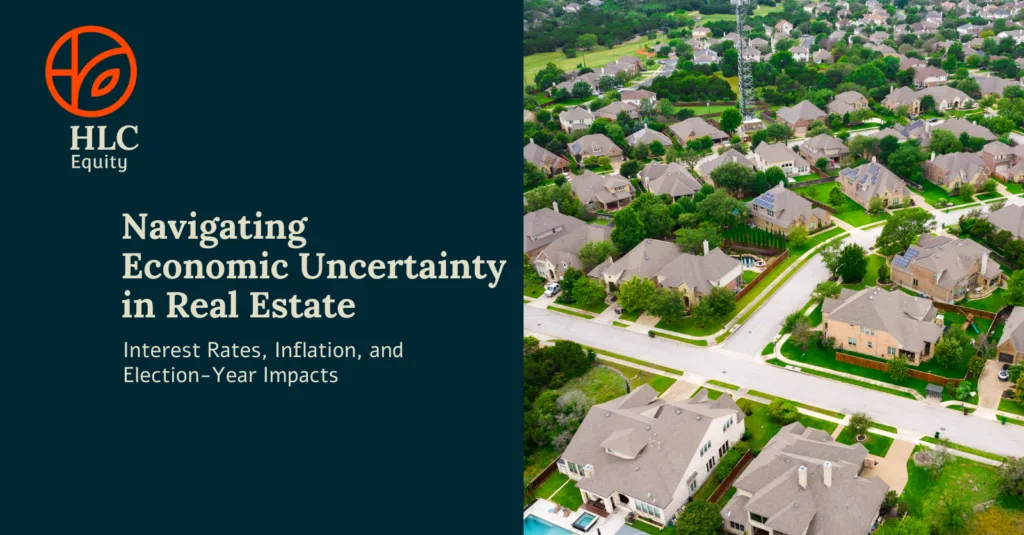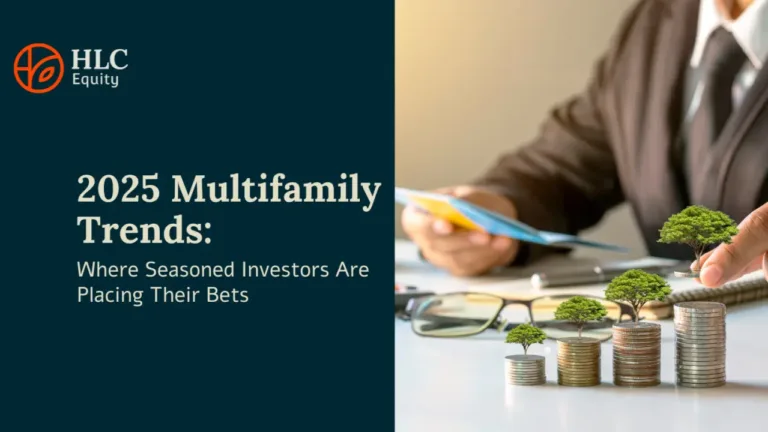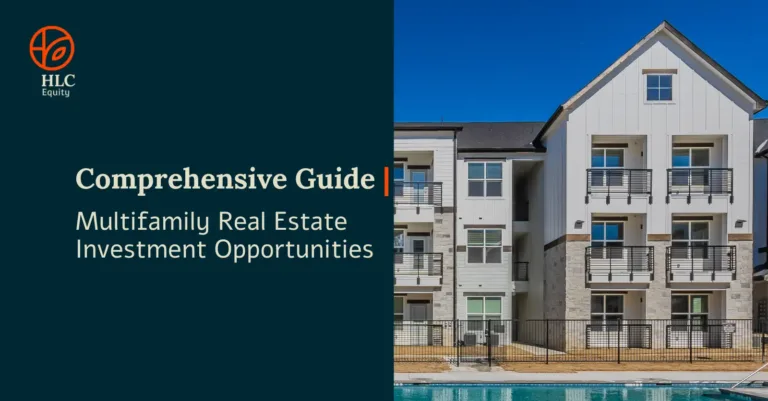
Introduction
The real estate market, often influenced by broader economic and political cycles, presents both challenges and opportunities for investors. As we navigate through 2024, a year marked by a pivotal election, multifamily and commercial real estate sectors must contend with the dual forces of rising interest rates and inflation. While the election itself may bring short-term uncertainty, historical data suggests that the real estate market remains resilient when approached strategically.
Here’s how interest rates, inflation, and election cycles intersect in real estate—and what investors can do to thrive in these changing conditions.
1. Impact of Interest Rates on Real Estate
The Federal Reserve’s monetary policy has been a defining factor in shaping the real estate market over the past few years. As interest rates rose to combat inflation, borrowing costs increased, leading to downward pressure on property valuations. Commercial real estate, which often relies on leverage, felt this impact acutely.
HLC Equity’s analysis of interest rate hikes highlights how higher costs of capital affect everything from transaction volumes to development pipelines. Investors faced narrowing margins as debt costs surged, forcing many to re-evaluate asset pricing and future returns. Despite these challenges, stabilizing rates in 2024 present an opportunity for investors to recalibrate and take advantage of reduced competition in some markets.
According to CBRE, higher interest rates have historically slowed real estate activity temporarily but do not typically lead to long-term declines. As rates stabilize, pent-up demand for high-quality assets may drive renewed activity in both multifamily and commercial markets.
2. Inflationary Environments and Multifamily Resilience
Inflation poses a dual-edged sword for real estate. On one hand, rising costs can challenge operational expenses; on the other, real estate has historically served as a hedge against inflation. Multifamily assets, in particular, have shown resilience due to their ability to adjust rents upward in response to inflationary pressures.
HLC Equity’s historical perspective on multifamily performance during inflationary periods underscores this point. Rental incomes tend to rise in tandem with inflation, offsetting increases in operating costs. This dynamic makes multifamily investments attractive for investors seeking stability in uncertain economic climates.
CBRE’s U.S. Real Estate Market Outlook 2024 projects that inflation-driven demand for certain property types, such as industrial and multifamily, will sustain healthy performance. Investors who focus on asset classes with strong inflation-hedging characteristics can better protect their portfolios from value erosion.
3. Election-Year Dynamics in Real Estate
Election cycles often bring uncertainty, leading to cautious behavior among investors. However, CBRE research shows that elections have minimal immediate impact on real estate investment activity. Instead, policy changes enacted after the election tend to shape market dynamics over time.
HLC Equity’s insights on election-year impacts emphasize that the anticipation of change—whether regulatory shifts, tax policy updates, or fiscal stimulus—can lead to temporary slowdowns. Yet, real estate markets historically adapt quickly to post-election realities, as investors realign their strategies with new government priorities.
This adaptability highlights the importance of long-term planning and the need to avoid reactionary decisions. By focusing on market fundamentals rather than short-term political shifts, investors can position themselves for success.
4. Strategies for Resilience in Uncertain Markets
In times of economic and political uncertainty, resilience becomes the cornerstone of successful investing. Here are key strategies to consider:
Diversify Across Asset Classes and Geographies: Spread investments across different property types and markets to mitigate localized risks. Multifamily, industrial, and mixed-use developments often provide balanced exposure.
Focus on Inflation-Resilient Assets: Prioritize assets with built-in inflationary hedges, such as multifamily properties with flexible lease terms or industrial assets in high-demand locations.
Maintain Financial Flexibility: Build financial buffers through reserves and flexible financing structures to adapt to changes in borrowing costs or tenant demand.
Stay Informed on Policy Changes: Monitor regulatory developments post-election, particularly those that affect taxes, zoning, and incentives.
Prioritize Due Diligence: In an environment where external factors can shift rapidly, thorough property and market analysis is critical. HLC Equity’s approach emphasizes hands-on analysis to uncover opportunities and mitigate risks.
5. Lessons from History: A Balanced Perspective
While interest rate hikes and inflationary pressures present challenges, history shows that real estate markets are resilient. Multifamily properties, in particular, have weathered inflation and election cycles effectively, providing investors with consistent returns.
CBRE’s historical analysis reveals that while political cycles can influence sentiment, the market often stabilizes as the new administration sets its policy agenda PwC. By balancing lessons from the past with forward-looking strategies, investors can capitalize on opportunities while minimizing risk.
Conclusion: Planning for Resilience in a Dynamic Market
Economic and political uncertainty will always be part of the real estate landscape. By understanding the interplay of interest rates, inflation, and election-year dynamics, investors can make informed decisions that align with their long-term goals.
Forward-thinking investors, like those aligned with HLC Equity’s strategies, focus on diversification, inflation-resilient assets, and meticulous due diligence to navigate these challenges successfully. By staying proactive and adaptable, real estate stakeholders can continue to thrive, regardless of broader market conditions.
Sources:
Important Disclosures: Nothing contained in this blog post constitutes tax, legal, insurance or investment advice, nor does it constitute a solicitation or an offer to buy or sell any security or other financial instrument. Any such offer or solicitation will be made only by means of an offering memorandum and organizational documents (collectively, the “Offering Documents”). This blog and all content on this website are for informational purposes only. We urge investors to consult with licensed legal professionals and investment advisors for any legal, tax, insurance, or investment advice.


